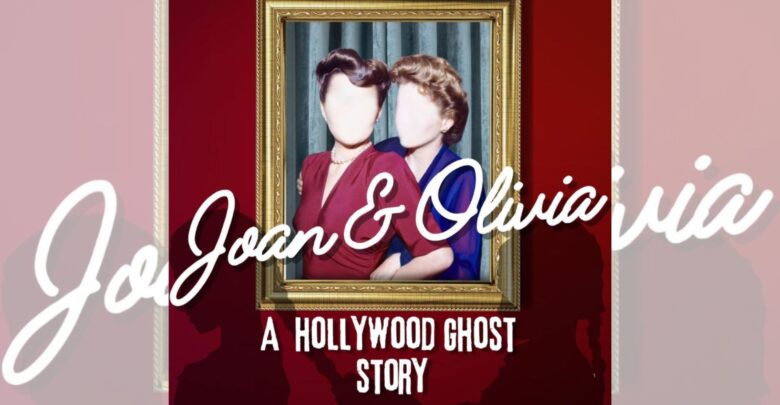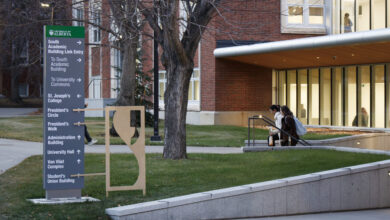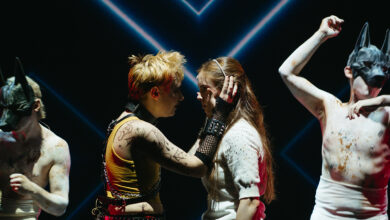2024 Fringe Festival Review: Joan and Olivia: a Hollywood Ghost Story
With a solid script and lively performances from the entire cast, 'Joan and Olivia' is well worth a watch.
 Supplied
SuppliedThe aged, Hollywood star is one of the great obsessions of modern pages, screens, stages, and hearts. In Joan & Olivia: a Hollywood Ghost Story — directed by Matt Eger and written by Georgia Findlay — renowned Golden Age actresses and sisters Joan (Georgia Findlay) and Olivia (Emma Nelles) have gone from gracing the silver screen to haunting their childhood home. Both decide to use their afterlife to guide two young sisters, Molly (Crystal Casera) and Celeste (Olivia Cameron), to stardom. Of course, this isn’t born out of the goodness of their hearts. Rather, they use the young girls as proxies to continue their life-long feud, ultimately turning the girls against each other.
Physicality is where Findlay and Nelles really shone. As anyone who has seen Golden Age films can tell you, Hollywood nurtured and pushed a very specific look and performance. Of course Findlay and Nelles had the classic red lips, pearls, done-up hair, heels, and knee-length dresses. But, the right look alone wouldn’t sell the performance. Throughout the entire 60-minute run, Findlay and Nelles were able to maintain the famous transatlantic accent common amongst Golden Age performers. Not only that, they spoke very naturally, as if they had been speaking it all their lives. Which of course, their characters had. Findlay and Nelles also had excellent posture. I can’t remember a single time they slouched. While it may seem like a small detail, it helped to sell them as Hollywood dames.
When writing the script, Findlay also did a very good job of imitating the dialogue of old films. Then, in their performance, Findlay and Nelles were able to match and maintain the typical pace. Joan and Olivia were witty, constantly swapping sweetly delivered, sly insults. They did so with speed — slow enough to understand but quick enough to really land.
Cameron and Casera had the challenge of playing children. Like Findlay and Nelles, their physical performances were dynamic and lively. Oftentimes when adults play children, trying to act like a convincing child takes precedence over trying to act like a convincing person. I was worried at first that this was the case. Then, after a time jump of a few years, I could see it wasn’t. Cameron and Casera were able to grow their characters up without losing the core personality traits of their younger versions.
The staging was simple but effective. On opposite sides of the stage were two, angled beds — red and blue — the same colours as Joan and Olivia’s dresses. In the middle there was a long, carpeted hallway. A painting of the two stood upstage centre. While these choices were strong overall, it did present some challenges when performing on a smaller stage. The rooms were an awkward size and angling the beds meant there was less usable stage. More than once a performer spoke for an extended time with their back nearly completely to the audience. While the staging cannot be completely blamed, I don’t think it helped.
Overall the script was fun and paced well, but the ending felt rushed and not very satisfying. Considering all the conflict between the two pairs of sisters, I was expecting more of a substantial resolution for at least one of the pairs. Joan and Olivia have more meaningful moments of emotional connection earlier on, such as when they compliment each other’s performances. Before they get snarky again, they genuinely connect. Calling back to those moments, and leaving out the snark, might have left a bigger impact.
All in all Joan and Olivia is a fun watch, due partly to the solid script and largely to the committed, lively performances. If you’re tired of rewatching the films of Cary Grant and Katharine Hepburn, try Joan Fontaine and Olivia de Haviland. My apologies, but this play is unfortunately not in black and white.
Joan and Olivia is playing at the Fringe Festival until August 24.




